
Kurt
Schwitters, Theo van Doesburg — Eric
Satie Eric Satie + Man Ray Man Ray + Marcel Duchamp Marcel Duchamp — Guillaume Apollinaire Guillaume Apollinaire — Francis Picabia Francis Picabia — Alfred Stieglitz Alfred Stieglitz — Marcel Duchamp Marcel Duchamp — Walter Arensberg |
| This set of eight photographs of artworks forms a sequence of references. One artist referring to another, who then refers to another and so on, so as to present a chain of artists’ connections and relationships. |
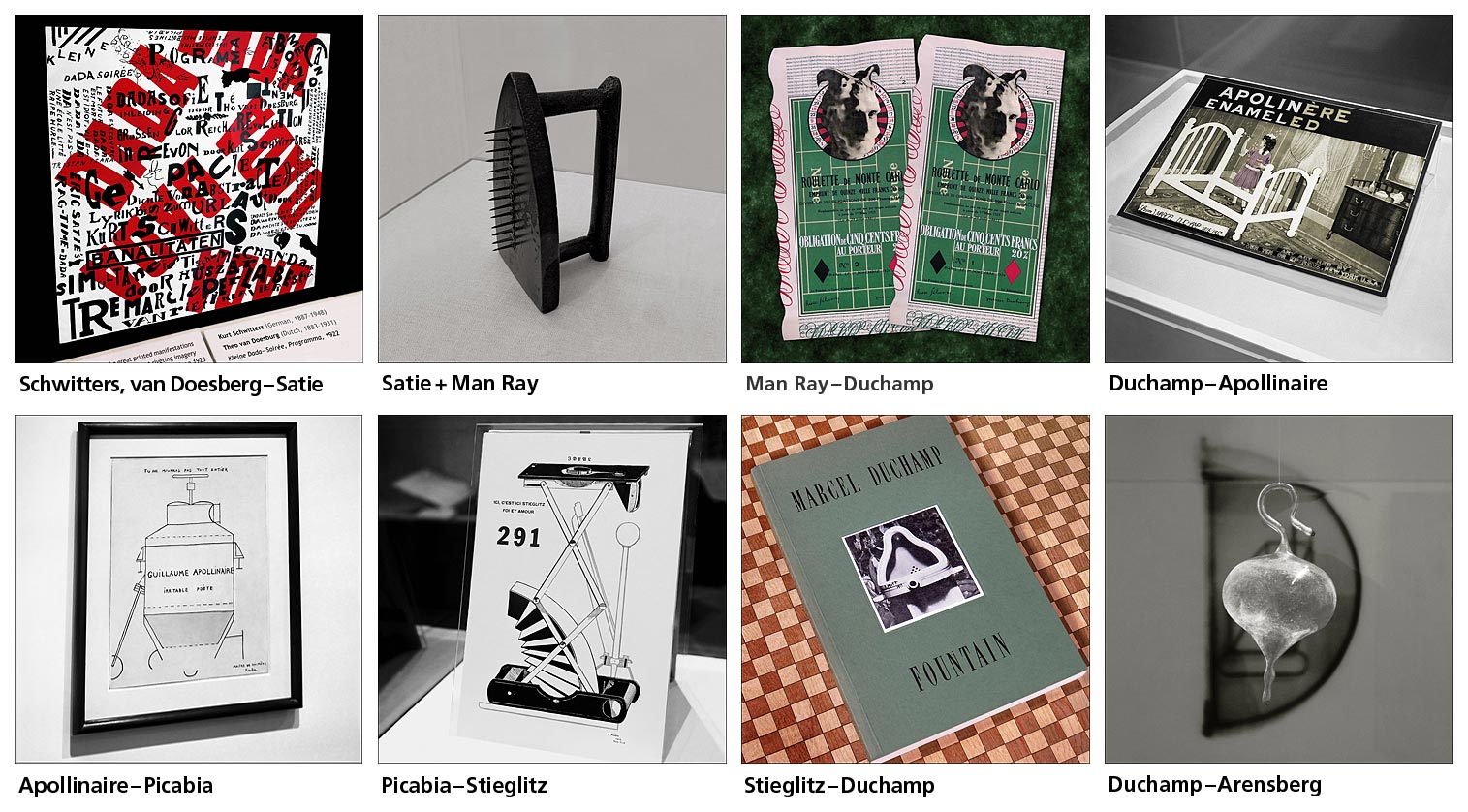
1924
sustained a return to what the politicians called “normalcy,” six
years after the period of social upheaval that followed the devastation
of the First World War and the 1918 flu pandemic. The Dada artists
had responded to the era with novel, nonsensical artworks, sometimes
political sometimes not, sometimes humorous sometimes not, reflecting
the craziness and uncertainty of the time, advancing what was even
thought
possible
in a work of
art. This way of thinking and working may be relevant again today
for an artist who wants to express a personal vision in difficult
times. |
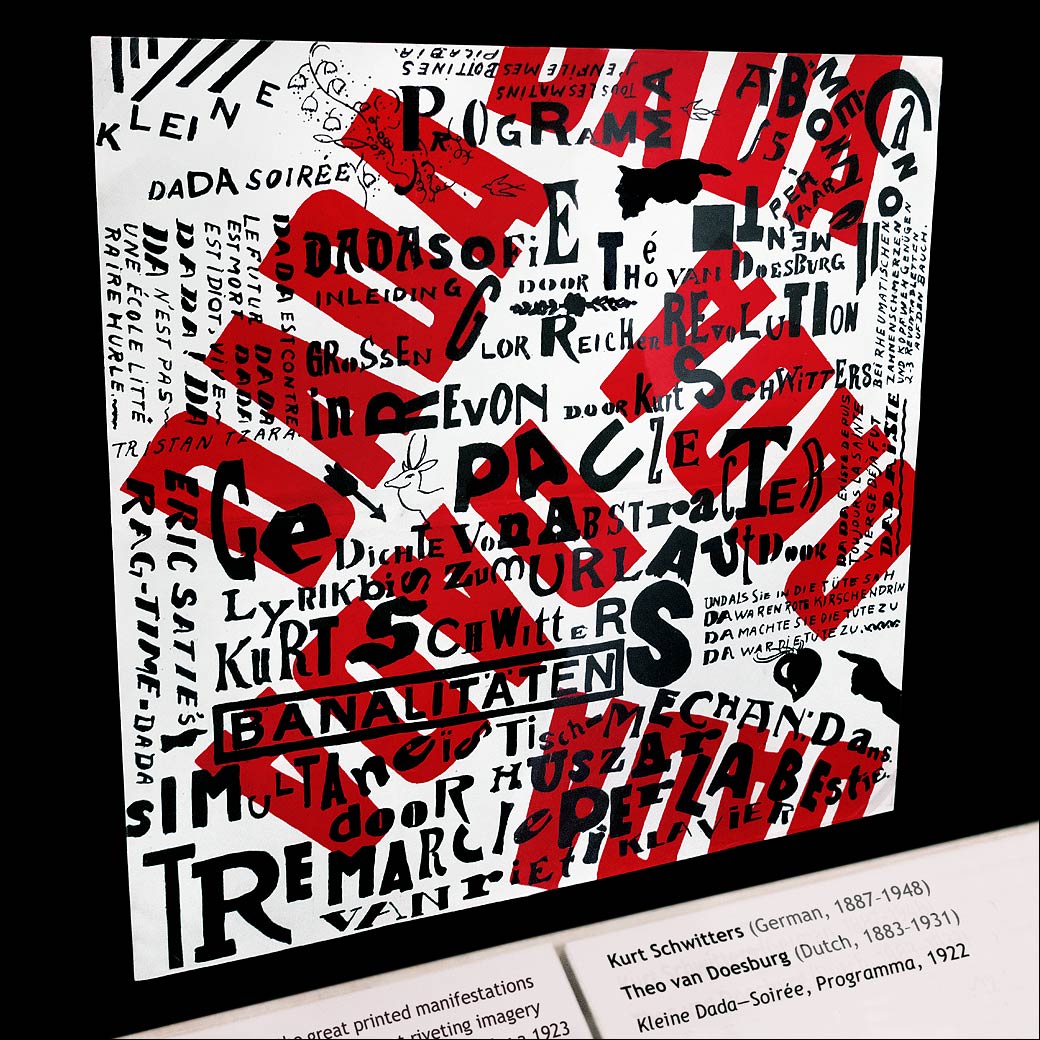 |
| Program
and poster for Kleine Dada Soirée, 1922 Kurt Schwitters and Theo van Doesburg Erik Satie playing “Rag-time Dada” Dada hurts. Dada does not jest, for the reason that it was experienced by revolutionary men and not by philistines who demand that art be a decoration for the mendacity of their own emotions… I am firmly convinced that all art will become dadaistic in the course of time, because from Dada proceeds the perpetual urge for its renovation.“ |
— Richard Huelsenbeck, “Dada
Lives,” 1936 |
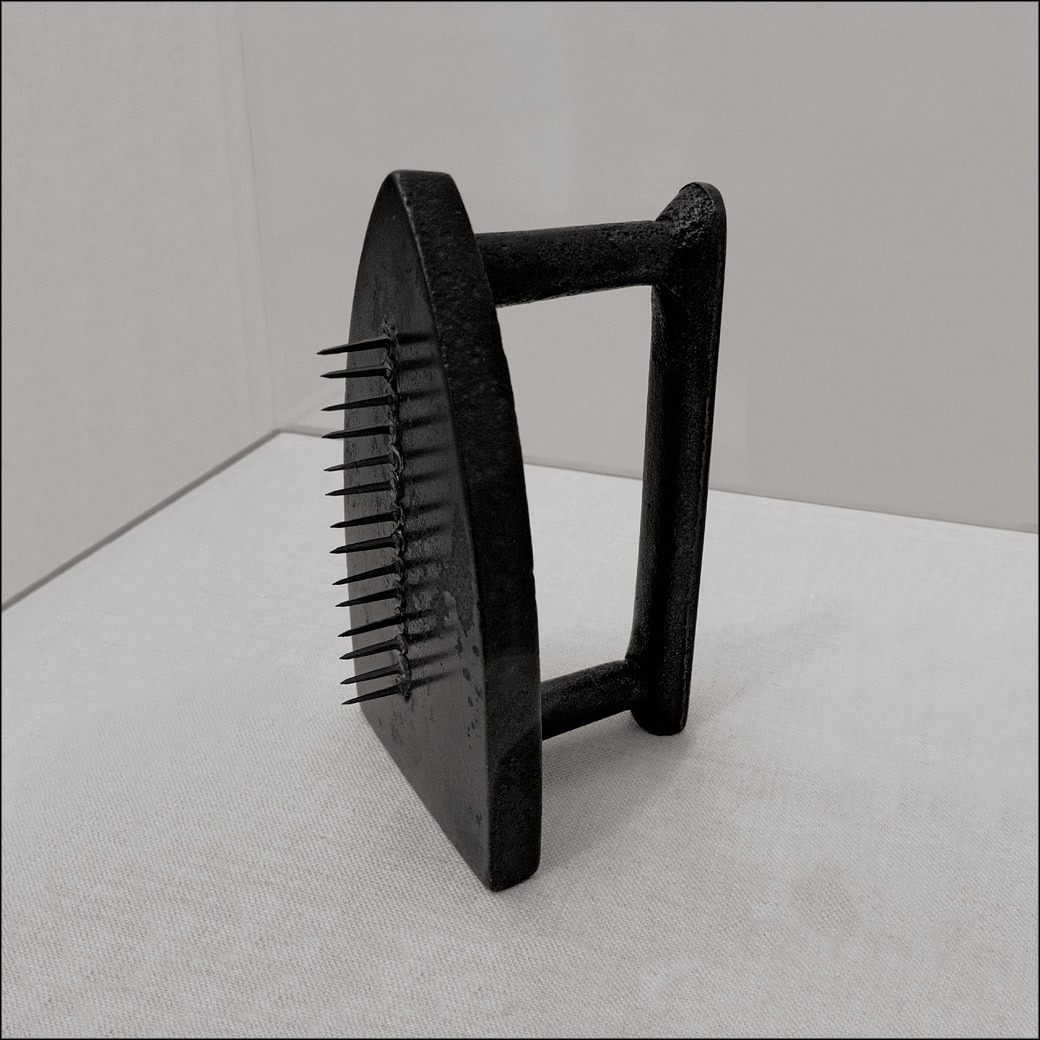 |
| Cadeau (Gift), Man Ray, assisted by Erik Satie, 1921 In his autobiography Man Ray recounted the story of the making of the original Cadeau: “On the day of the opening of his first solo exhibition in Paris he had a drink with the composer Erik Satie and on leaving the café saw a hardware store. There with Satie’s help—Man Ray spoke only poor French at this point—he bought the iron, some glue and some nails, and went to the gallery where he made the object on the spot. He intended his friends to draw lots for the work, called Cadeau, but the piece was stolen during the course of the afternoon.” |
— Jennifer Mundy, “Notes
from The Tate, London,” 2003 |
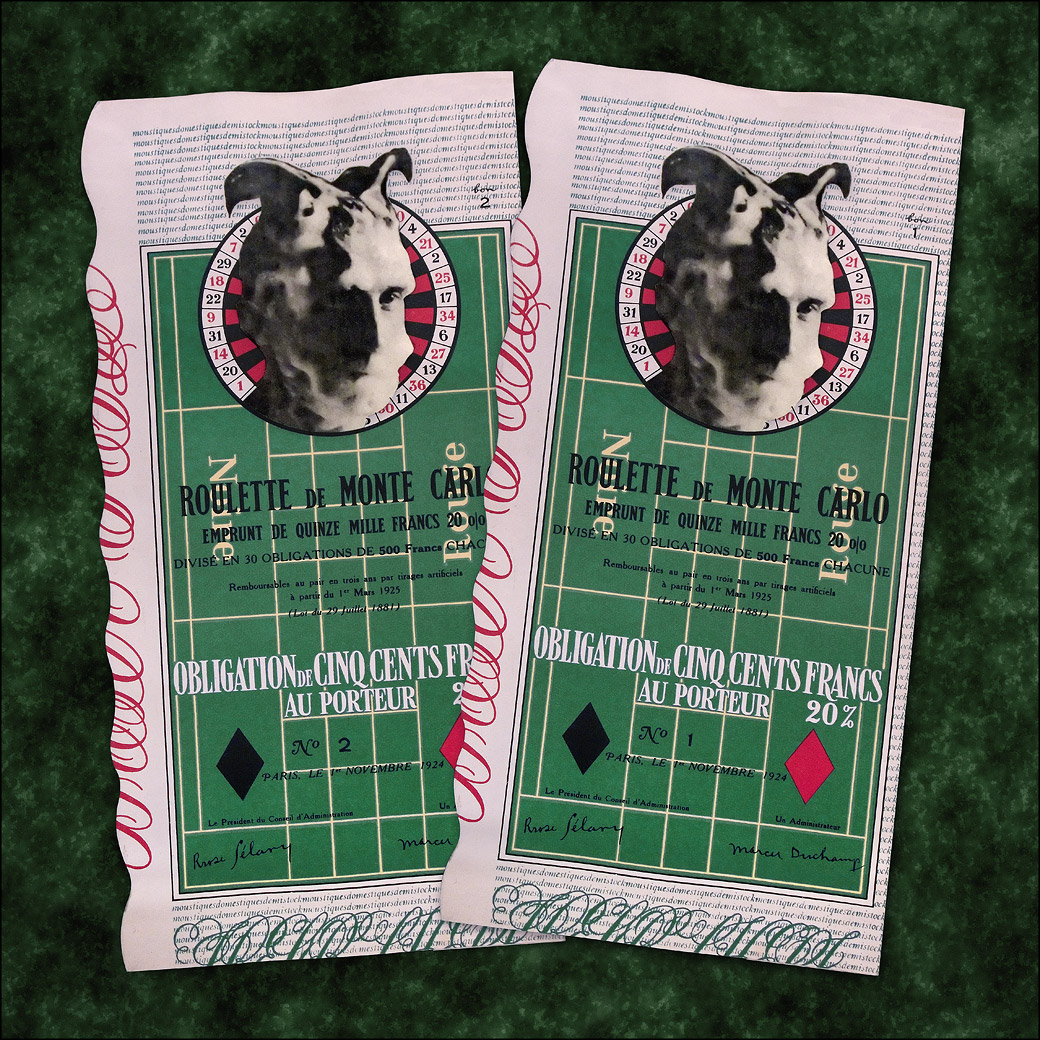 |
| Monte
Carlo Bond, Marcel Duchamp, photograph of Duchamp by Man Ray, 1924 Extracts from the Company Statutes Clause No. 1. The aims of the company are: 1. Exploitation of roulette in Monte Carlo under the following conditions: 2. Exploitation of Trente-et-Quarante and other mines on the Cote Azur, as may be decided by the Board of Directors. Clause No. 2. The annual income is derived from a cumulative system which is experimentally based on one hundred thousand rolls of the ball; the system is the exclusive property of the Board of Directors. The application of this system to simple chance is such that a dividend of 20% is allowed. Clause No. 3. The Company shall be entitled, should the shareholders so declare, to buy back all or part of the shares issued, not later than one month after the date of the decision. Clause No. 4. Payment of dividends shall take place on March 1 each year or on a twice yearly basis, in accordance with the wishes of the shareholders. |
— From
the back of the bond as translated by Arturo Schwarz |
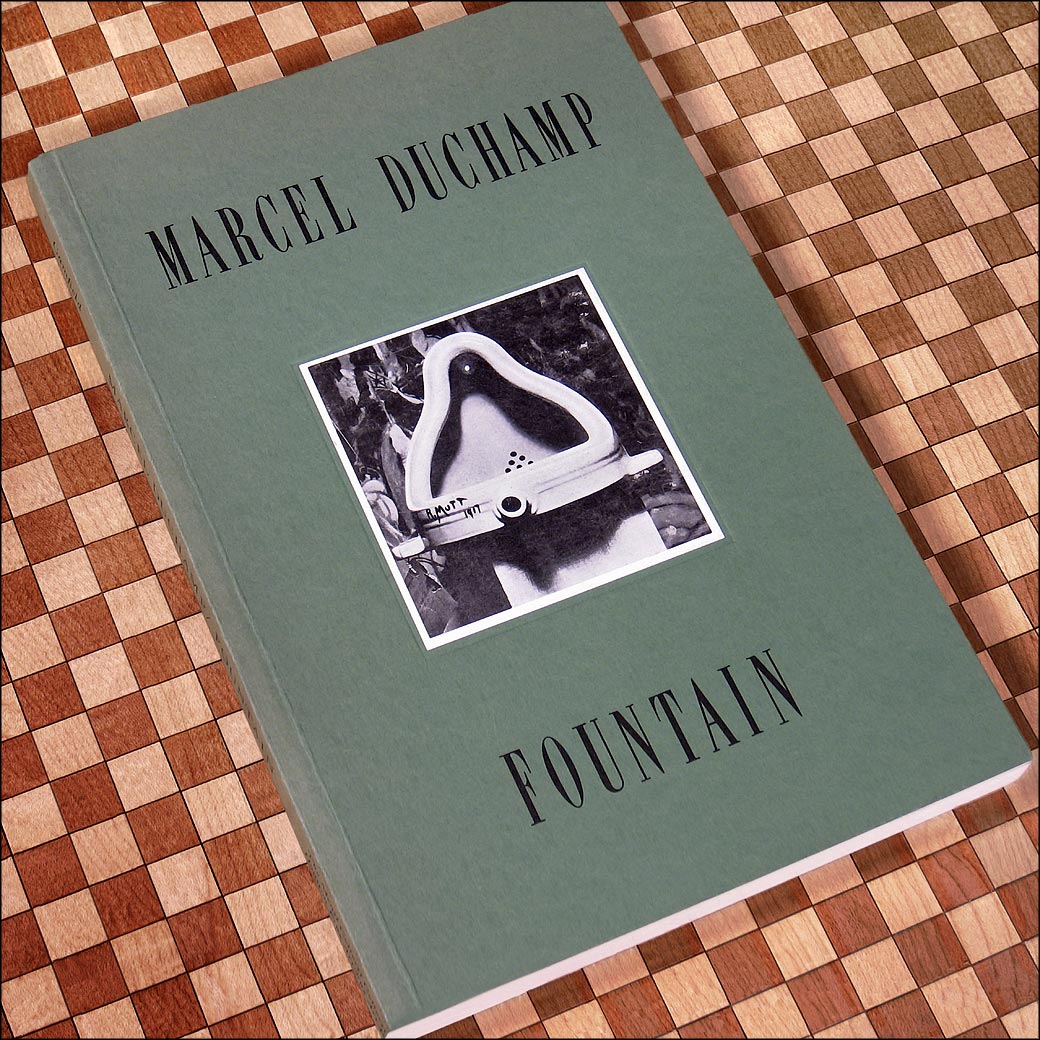 |
Fountain, Marcel
Duchamp (William Camfield, author, 1989), cover photograph by Alfred
Stieglitz,
1917, with Marsden Hartley’s The Warriors, 1913,
as background. Here placerd on an infinite chessboard. Duchamp saw the artist as a readymade to be moved through the market like a chess piece on a grid.” |
— David Joselit, Société Anonyme:
Modernism for America, 2006 |
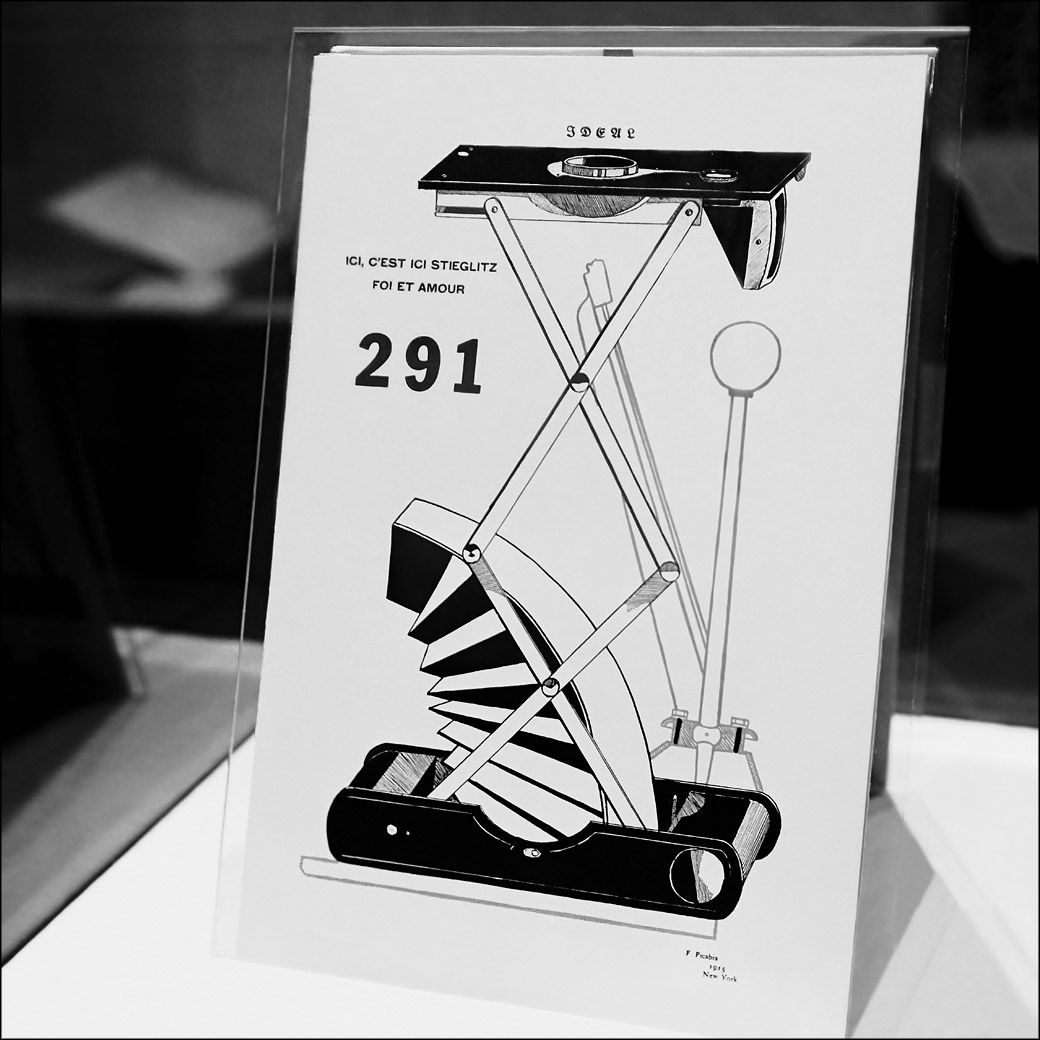 |
C'est
Ici Stieglitz Foi et Amour (This is Stieglitz / Faith and Love, |
— Paul Haviland, “291” magazine,
1915 |
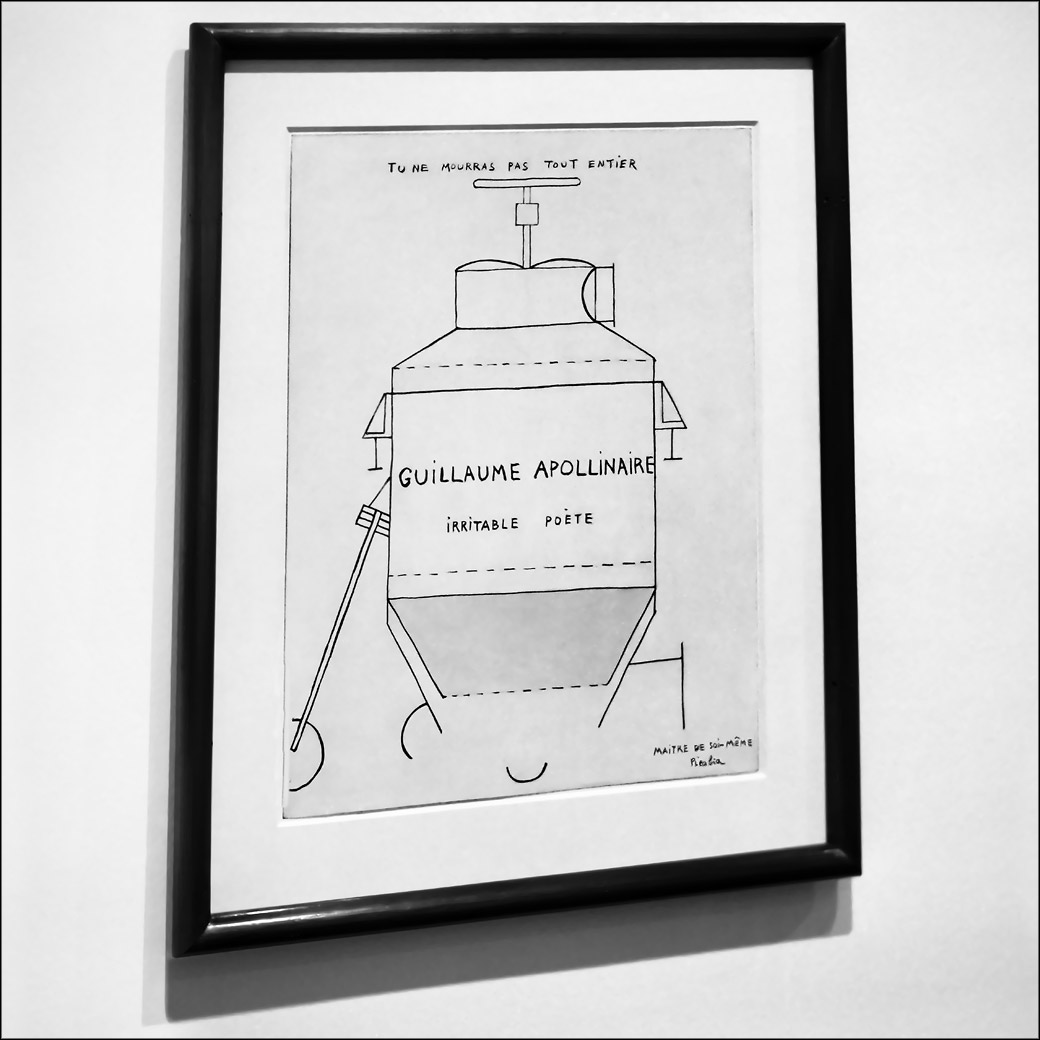 |
Guillaume
Apollinaire,
Irritable Poète, |
— The
character Dr. Cornelius Hans Peter from Apollinaire’s novel, Que Faire, 1900 |
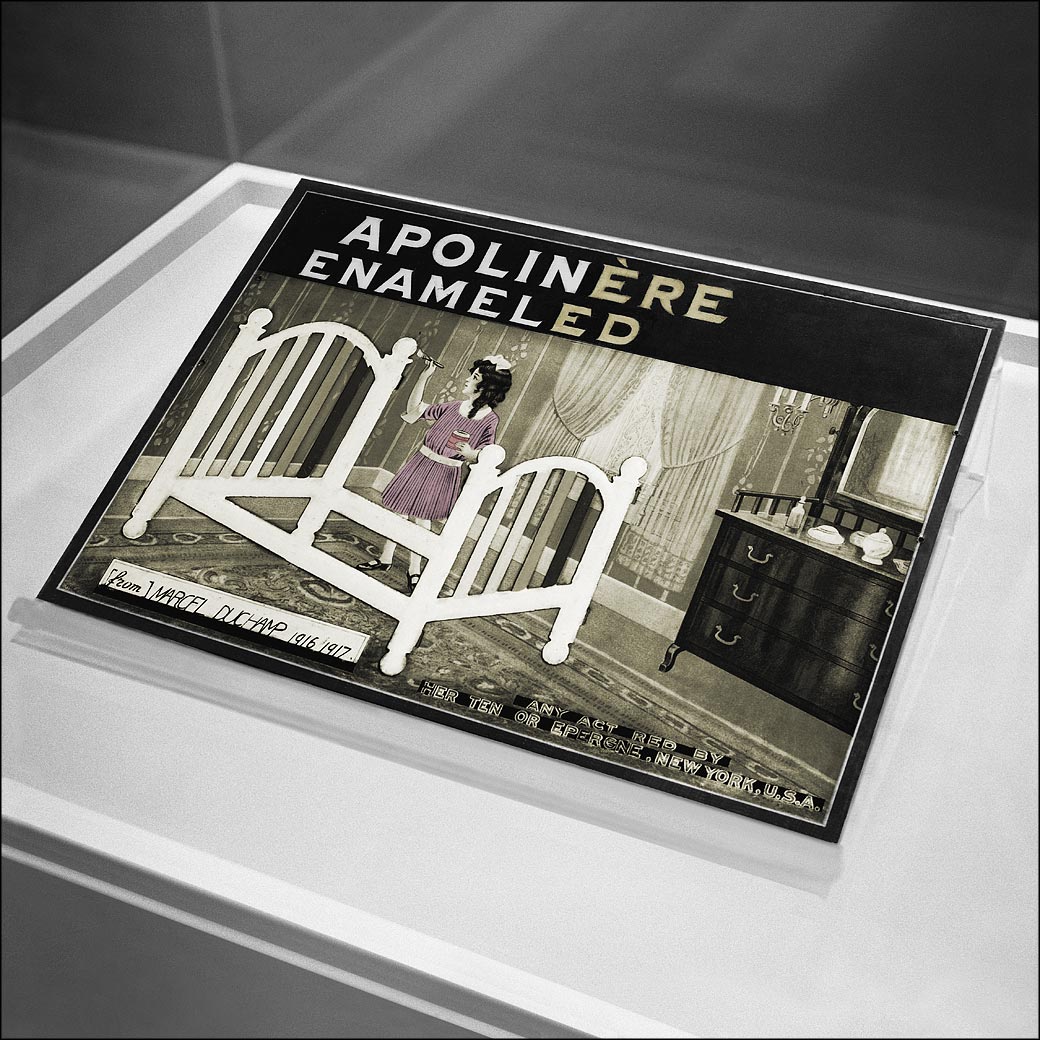 |
Apolinère
Enameled, Marcel Duchamp, 1916, |
— Pablo
Picasso, Juan Gris, Max Jacob, Paul Dermée, Reverdy & Blaise Cendrars, at a banquet to honor Guillaume Apollinaire, 1917 |
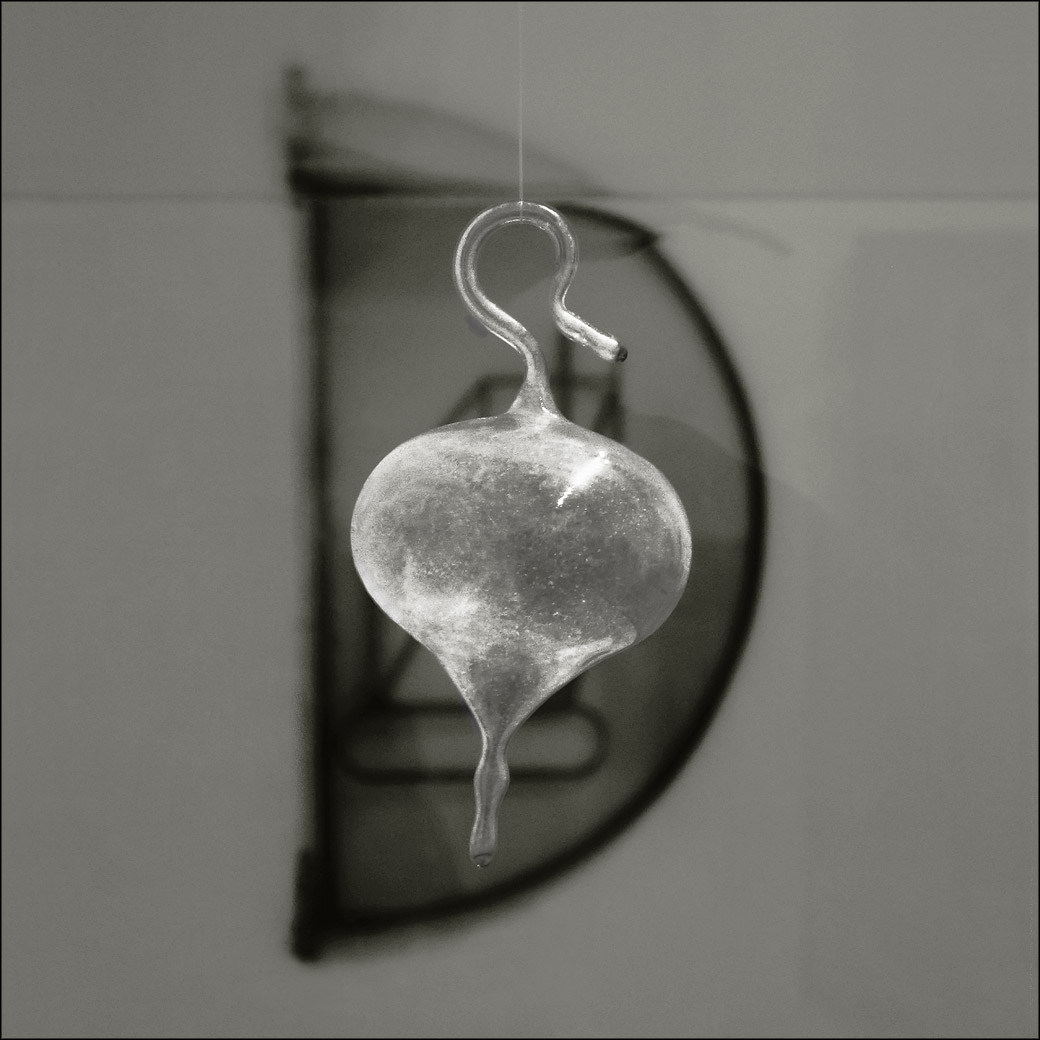 |
| 50ccs
of Paris Air, Marcel
Duchamp, 1919, a gift to Walter Arensberg In the background: Glider Containing a Water Mill in Neighboring Metals, Duchamp's first artwork on glass, 1913–15 Duchamp purchased this “empty” ampoule from a pharmacist in Paris as a souvenir for his close friend and patron, Walter C. Arensberg. A vial with nothing in it may be the most insubstantial “work of art” imaginable. From a molecular point of view, air is not considered nothing, but when displayed so carefully in an art museum it seems to be less than one might expect. Its precise meaning was rendered even more unstable in 1949, when the ampoule was accidentally broken and repaired, thus begging the question: Is the air even from Paris anymore? |
—Curator’s
label, Philadelphia Art Museum, 2006 |
| All photographs of artworks by Victor Landweber |